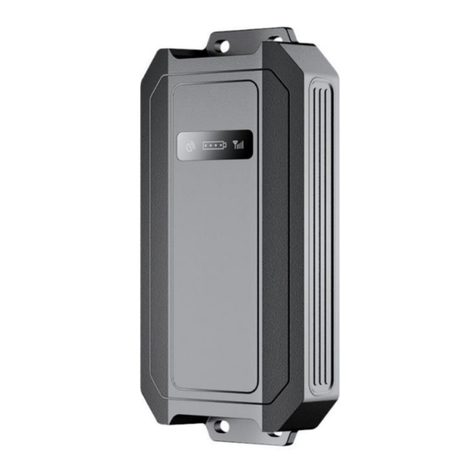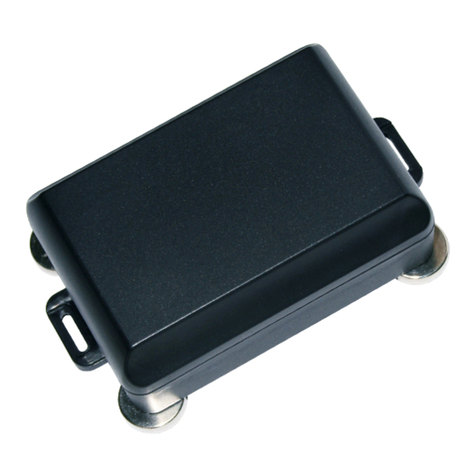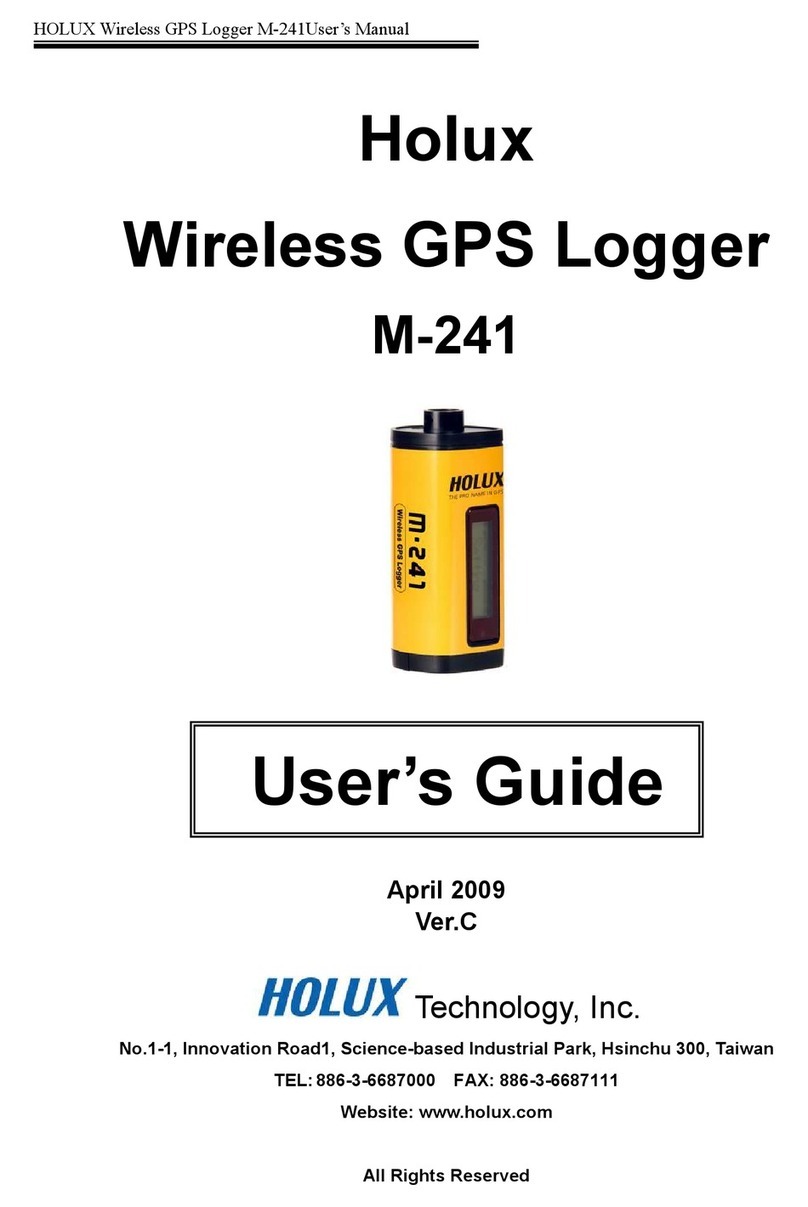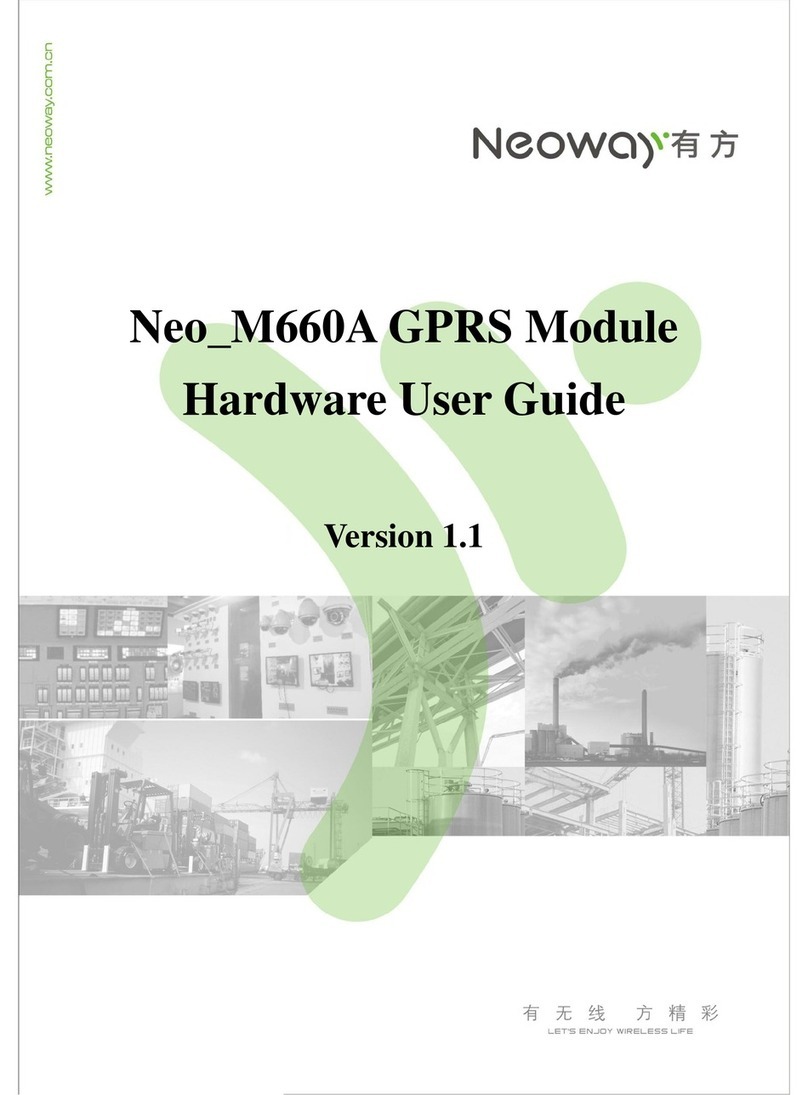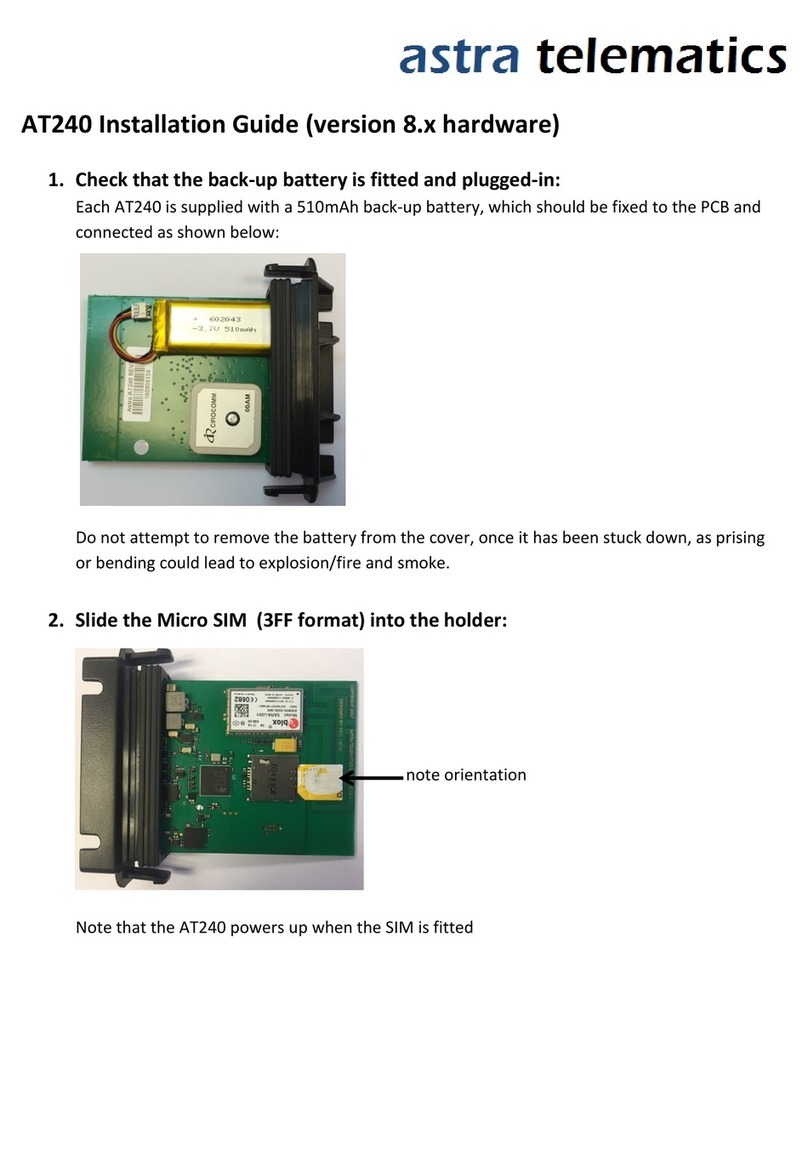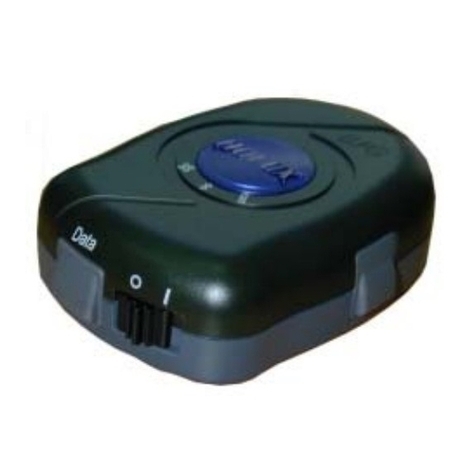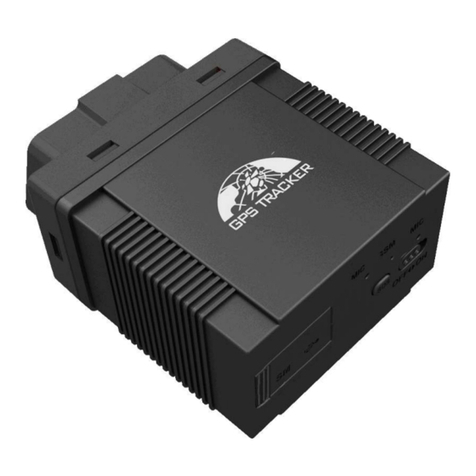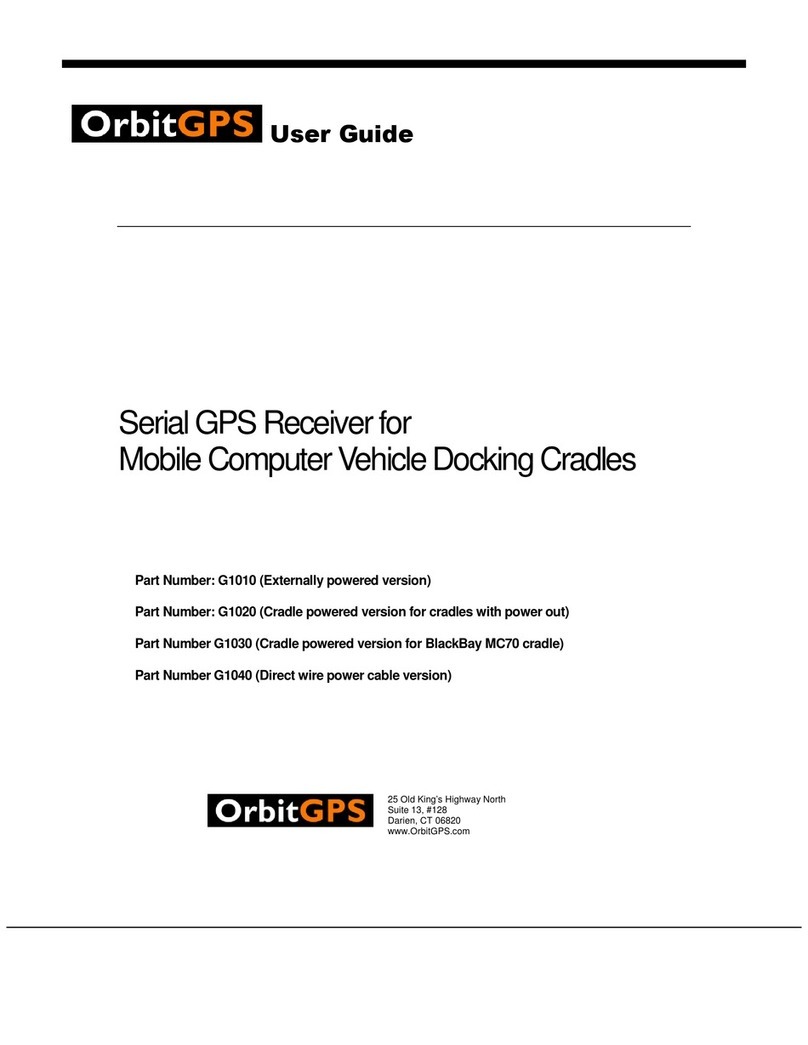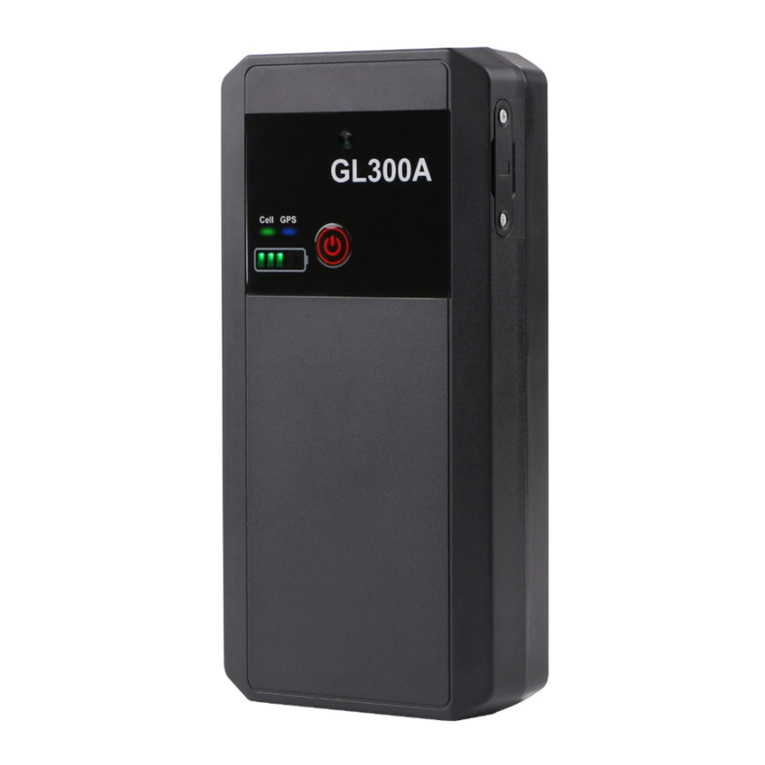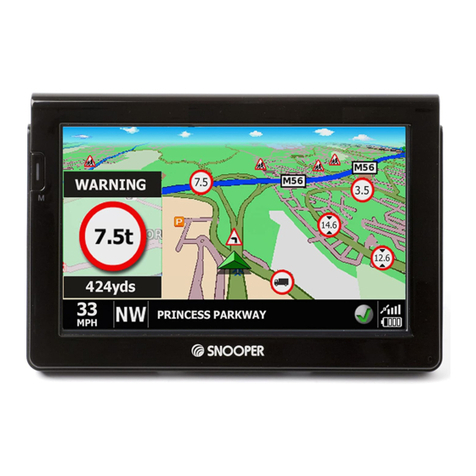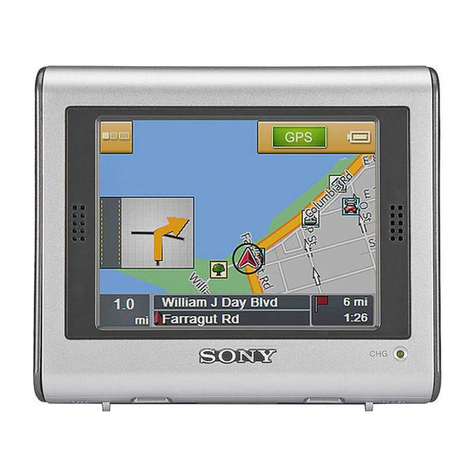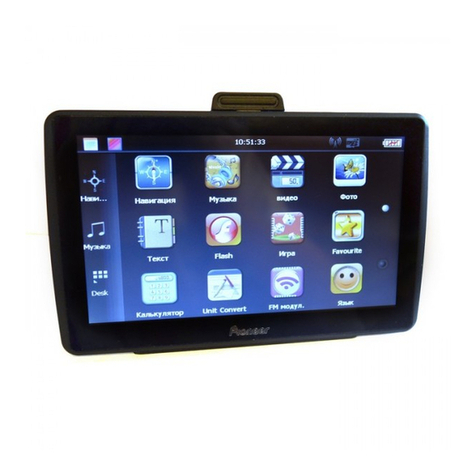Roadragon LTS-100D Configuration guide

LTS-100D User manual
I
User Manuel
LTS-100D

LTS-100D User manual
II
Content
Product overview.................................................................................................................................................... 1
Product Features......................................................................................................................................................2
2.1 basic skills.........................................................................................................................................................2
2.1.1 Positioning monitoring....................................................................................................................... 2
2.1.2 Regular monitoring.............................................................................................................................2
2.1.3 Blind spot compensation.................................................................................................................... 2
2.1.4 corner compensation...........................................................................................................................2
2.1.5 Base station positioning......................................................................................................................2
2.1.6 Main power detection......................................................................................................................... 3
2.1.7 Overspeed alarm................................................................................................................................. 3
2.1.8 Main power failure alarm................................................................................................................... 3
2.1.9 Built-in battery....................................................................................................................................3
2.1.10 fast charge......................................................................................................................................... 3
2.1.11 Power saving function......................................................................................................................... 3
2.1.12 Intelligent self-test............................................................................................................................ 4
2.1.13 Remote settings.................................................................................................................................4
2.1.14 Remote upgrade(FOTA)..............................................................................................................4
2.1.15 Multilink........................................................................................................................................... 4
2.2 extensions..........................................................................................................................................................5
2.2.1 Tire pressure detection........................................................................................................................5
2.2.3 output control......................................................................................................................................5
2.2.4 AD detection....................................................................................................................................... 5
technical parameter................................................................................................................................................. 6
3.1 Electrical parameters.........................................................................................................................................6
3.2 Product configuration....................................................................................................................................... 6
Installation Notes.................................................................................................................................................... 7
4.1 install equipment...............................................................................................................................................7
4.1.1 Open the cover to install the SIM card..................................................................................................7
4.1.2 Harness Definition and Wiring.............................................................................................................. 7
4.2 parameter settings............................................................................................................................................. 8
4.2.1 Set IP port...............................................................................................................................................8
4.2.2 Set postback interval..............................................................................................................................9
4. 3 Installation location..........................................................................................................................................9

1
Product overview
LTS-100D is a special positioning product
Switchable between wired and wireless
Built-in 5200mAh polymer lithium battery, use real-time positioning under the
condition of wiring.
Support satellite positioning, AGPS positioning, base station positioning, etc.
Communication support: GSM and GPRS.
Expansion interface, can be connected to tire pressure sensor, load sensor, door
sensor, pressure switch, etc.
Support remote firmware upgrade.
Support multiple protocols, compatible with multiple standard platforms.
IP68 highest level waterproof.

2
Product Features
2.1 basic skills
2.1.1 Positioning monitoring
It includes functions such as timing return, blind spot compensation, speed and mileage statistics,
and regional monitoring. The system issues positioning commands, and the terminal returns data
including longitude, latitude, speed, direction, and status information.
2.1.2 Regular monitoring
The vehicle-mounted satellite positioning terminal can set a certain moment or a certain period
of time or send the vehicle's position and status information to the monitoring center at certain time
intervals.
2.1.3 Blind spot compensation
When the terminal enters the GPRS blind area, the track data will be saved at the set time interval,
and the blind area data will be uploaded to the platform when the GPRS is back online. Up to 4000
pieces of blind spot compensation data can be saved.
2.1.4 corner compensation
When the vehicle enters the curve, the terminal detects that there is a certain angular deviation in the
driving direction (default 20 degrees), and will add a regular return message to ensure that the
driving trajectory is more accurate.
2.1.5 Base station positioning
The terminal uses satellite positioning by default. When it enters the signal blind area and cannot be
accurately positioned, the terminal automatically switches to base station positioning. The terminal
obtains base station information every 30S, uploads the base station information, and the specific

3
location is analyzed by the server.
2.1.6 Main power detection
The terminal detects the main voltage in real time. When the battery voltage on the vehicle is too low,
the vehicle terminal reports a low voltage alarm to the monitoring center.
2.1.7 Overspeed alarm
When the vehicle speed is higher than the overspeed alarm value, the vehicle terminal will notify the
monitoring center.
2.1.8 Main power failure alarm
When the main battery of the vehicle is damaged or cannot supply power, the built-in backup power
supply can keep the system working and send a power failure alarm to the monitoring center.
2.1.9 Built-in battery
The terminal has a built-in large-capacity high-temperature lithium battery, which can detect the
battery power in real time and report the battery power in real time. When the built-in battery is
working, the terminal has a variety of working states, which can support the terminal to work
continuously for no less than 7 days.
2.1.10 fast charge
The terminal has a fast charging function. When the main power is available, the built-in battery can
be quickly charged through the fast charging module.
2.1.11 Power saving function
The terminal has a built-in G-Sensor, which can automatically detect the current state of the device
and distinguish whether it is in motion mode or static mode; when the terminal is in the static mode
for a period of time, the terminal can automatically enter the power saving mode, and the uploaded

4
data will be converted to heartbeat return; After the G-Sensor detects in real time that it enters the
sports mode, the terminal immediately exits the power saving mode and enters the normal working
state.
2.1.12 Intelligent self-test
The in-vehicle terminal can perform self-diagnosis. Once a fault occurs, it will send a fault
notification to the center, such as GPS, GSM, etc., and can automatically take relevant measures. The
monitoring center can also query the current model, version, configuration, running status and device
function of the terminal.
2.1.13 Remote settings
Remotely set various parameters of the terminal through the central system, including IP, central
number, various monitoring parameters, etc.
2.1.14 Remote upgrade(FOTA)
As long as the GPRS status of the terminal is available, the terminal firmware upgrade can be
completed in a remote wireless manner.
2.1.15 Multilink
The terminal supports dual-IP dual-link connection between the primary server and the backup server.
The primary server and backup server can be set in two ways: IP or domain name.

5
2.2 extensions
2.2.1 Tire pressure detection
The terminal can be connected to a tire pressure detector to detect tire pressure information in
real time and send it to the background. The terminal can judge the tire pressure status in real time.
Once abnormal tire pressure is found, the tire pressure alarm can be notified in real time.
2.2.2 Status detection
The terminal supports 2-way I/O detection, one high-level input and one low-level input, which
can be used to detect vehicle state quantities. Such as unpacking doors, loading containers, hooking
up trucks, etc.
2.2.3 output control
The terminal supports 1 channel of I/O output, low level output, which can be used to connect a
channel of controller.
2.2.4 AD detection
The terminal supports 2 channels of AD signal input, the voltage range is 0~5V, and can be used for
2 channels of analog detection.

6
technical parameter
3.1 Electrical parameters
Product Features
specific description
Operating Voltage
DC 9V~36V, suitable for 12V/24V vehicles
Working current
Average current <100mA@12V
Main power sleep
current
<15mA@12V
battery sleep current
<300uA@3.7V (long standby mode)
Built-in battery
Lithium polymer battery, capacity 3.7V/5200mAH
Charge
Built-in battery supports fast charging
communication
system
2G:GSM/GPRS 850/900/1800/1900MHz
positioning mode
Support Beidou/GPS dual-mode positioning, AGPS assisted
positioning and LBS positioning
Antenna built-in
Built-in GSM antenna and positioning antenna
data storage
4MB FLASH (different capacity optional)
I/O interface
2 input, 1 output
AD interface
2-channel ADC input, input voltage 0~5V
UART interface
Two RS232 and one RS485
Remote upgrade
Support remote FOTA firmware upgrade
wake up from sleep
Timing wake-up, open box alarm wake-up
Open box alarm
Support disassembly wake-up alarm
Multilink
Support multi-IP multi-link simultaneous connection
physical dimension
120mm*70mm*50mm
temperature range
Working temperature: -25℃~70℃;
Storage temperature: -40℃~+85℃;
Protection class
IP68
3.2 Product configuration
basic configuration
name
describe
host
1PCS
3P power cord
1PCS
manual
1PCS
Warranty Card
1PCS
certificate
1PCS
Optional accessories
door sensor
tire pressure
temperature sensing
Humidity Sensing

7
Installation Notes
4.1 install equipment
4.1.1 Open the cover to install the SIM card
Definition of indicator light:
Red communication status LED light: flashing quickly, GPRS network dialing.
It flashes slowly every 5 seconds and is online.
Green positioning status LED light: flashes quickly, the base station is positioned.
Steady on, it has been positioned.
Not lit, not positioned.
4.1.2 Harness Definition and Wiring
The device uses a car-grade waterproof connector (DJ70xxY) and a bellows protective sleeve by
default, which can effectively protect the wiring harness and ensure the stability of the link.
Remove the face cover
To remove the face cover, you need to use
Phillips screwdriver, remove 6 screws.
Host fixing hole
SIM card holder
battery switch
Red LED, communication status
Green LED, positioning status
When the power is off, insert the SIM card into the card holder,
And fasten the card holder.
Built-in antenna

8
Equipment wiring instructions:
3P power plug: Including the positive and negative wire harness of the power
supply, when installing the wiring, it should be connected with the trailer power cord.
4P communication plug :The default is RS232 serial communication interface,
which provides 5V power output, which can supply power for external sensors. It
can be used to connect peripherals such as tire pressure sensor, humidity sensor,
temperature sensor, etc. Note: This interface is a multiplex communication port,
which can extend up to 2 channels of RS232/1 channel of 485 communication.
6P I/O port plug: Provides 2 AD input signal lines, 2 I/O input signal lines and 1
I/O output signal line. It can be used to collect analog signals, connect external
controllers and collect switch signals.
4.2 parameter settings
4.2.1 Set IP port
Note: The terminal has a built-in ID number, and the customer's IP port can be preset at the
factory, and generally no parameter setting is required. If you need to modify the IP, set it according
to the following instructions. The following two methods require the SIM card to activate the SMS
function.
For example, the client's server IP is: 119.23.233.52, port number: 6000.
1TCP connection mode, use SMS to write: *88*1119023233052*6000*1#, send to the
local number, the terminal will reply: set ok, then the setting is successful.
2UDP connection mode, write: *88*1119023233052*6000*0#, send to the local
number, the terminal will reply: set ok, then the setting is successful.
3Ppower plug Red wire: positive power supply
Black wire: negative power supply
4P communication plug Green line + blue line: serial communication signal line
Black wire: signal ground wire
Orange wire: 5V power supply
6P I/O plug Brown line, blue line: 2-way AD input signal line
Yellow wire: I/O output signal wire
Purple line, orange line: 2 I/O input signal lines

9
After completing the above settings, the terminal can be connected to the server, the device indicator
light is solid green or flashing, and the red light is flashing slowly, indicating that the terminal has
been online and positioned normally. At this point, cover the top cover and tighten the screws to fix
the device to the trailer for use.
4.2.2 Set postback interval
Instruction format:HC,T1,T2,T3#
Instruction Description:
T1: Start the return interval, the value range is 5-1800 seconds, the default is 30 seconds
T2: Interval between flameout and return, the value range is 5-1800 seconds, the default is 120
seconds
T3: Sleep return interval, the value range is 15-21600 seconds, the default is 180 seconds
Example: HC,60,180,300# Set T1/T2/T3 to 60 seconds, 180 seconds, 300 seconds respectively
Use Note:
It is strictly forbidden to use the equipment not in accordance with the operating instructions,
unauthorized disassembly, collision, charging, soaking in water, exceeding 80°C, human failure,
force majeure damage, etc., otherwise the resulting short circuit, insufficient working time, battery
deformation, leakage, explosion, etc. No warranty or compensation for consequential losses.
4. 3 Installation location
LTS-100D is designed to meet the IP68 protection standard and can be installed and fixed in
exposed environments. Usually, it can be fixed at the position marked in the figure below, and the
equipment line is routed along the original vehicle wiring harness.

Table of contents
Other Roadragon GPS manuals

Roadragon
Roadragon G-MT008G User manual
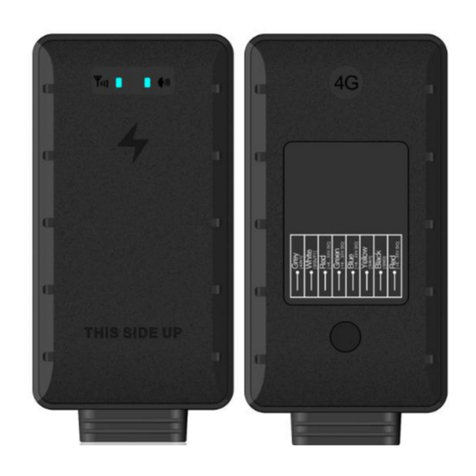
Roadragon
Roadragon MT-009 4G User manual
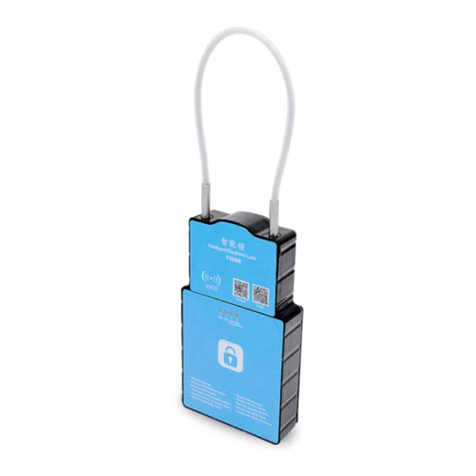
Roadragon
Roadragon GLL-150 User manual
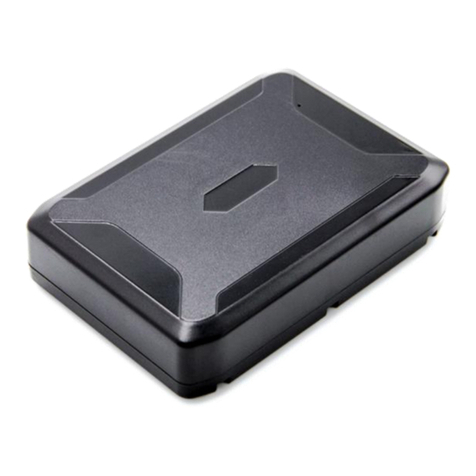
Roadragon
Roadragon LTS-100DS User manual

Roadragon
Roadragon LTS-3YT User manual

Roadragon
Roadragon MT-009 4G User manual
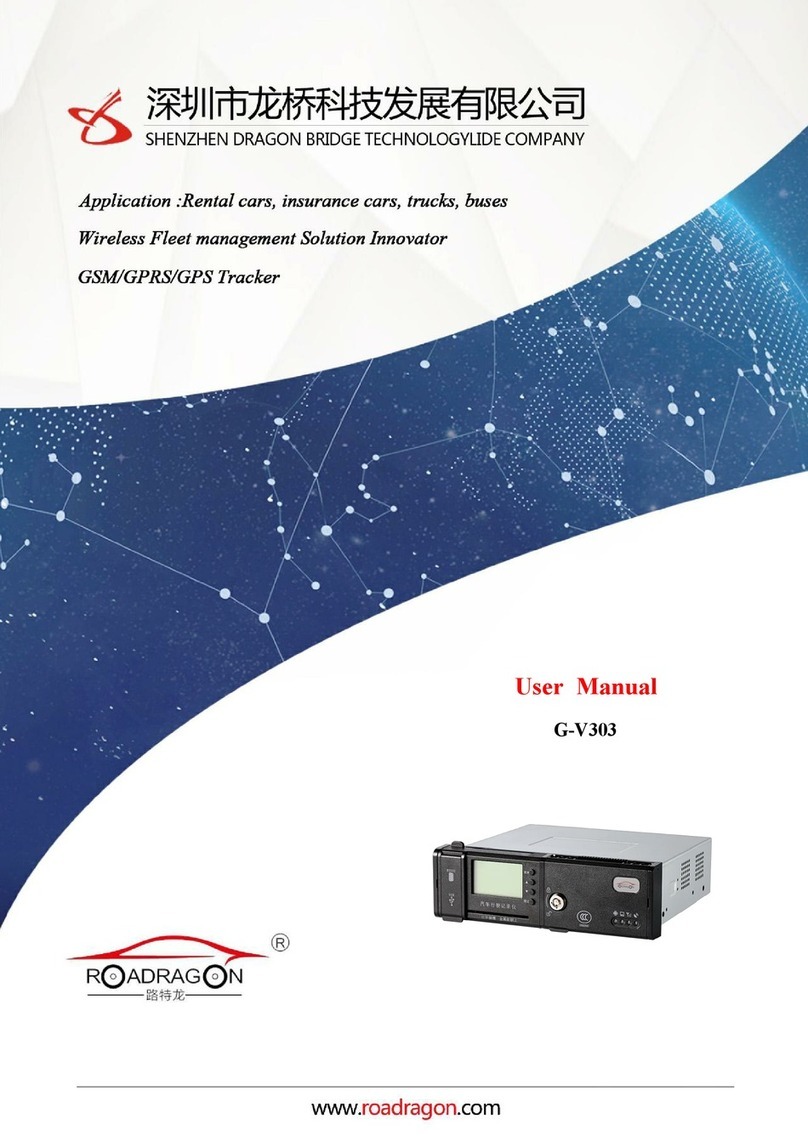
Roadragon
Roadragon G-V303 User manual
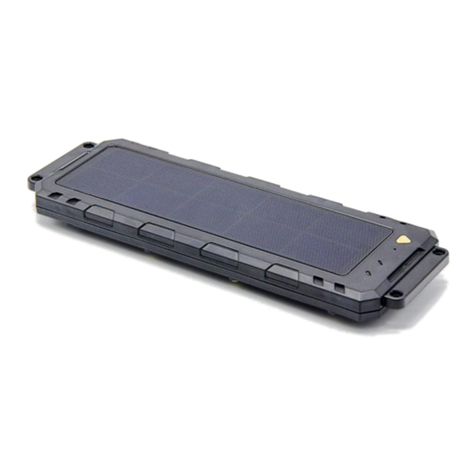
Roadragon
Roadragon LLS-100TS Configuration guide
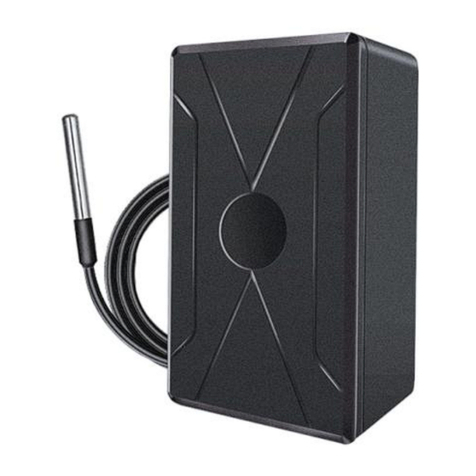
Roadragon
Roadragon LTS-60TH Configuration guide
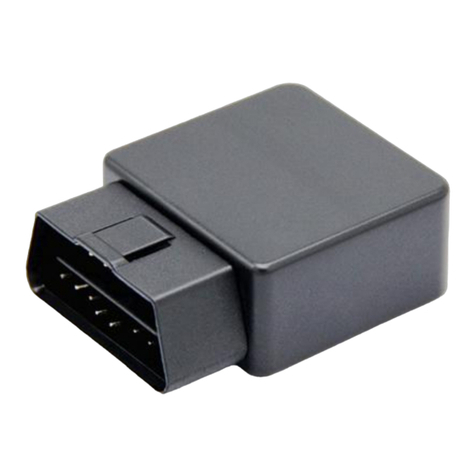
Roadragon
Roadragon G-M100 User manual




